VW ID.7 GTX Tourer first drive: the electric estate's coming of age
There aren't many electric estate cars on the roads, but the VW ID.7 GTX Tourer could be a top choice


VW's electric car plans started small with the ID.3, before moving into the sort of mass-market SUVs that everyone seems to want. The ID.4 and ID.5 followed, leaving one car segment relatively untouched. Estates – or station wagons – may appear to be less popular than they once were, but Volkswagen told me that it expects to sell more of the Tourer version of the ID.7 than it does the saloon across Europe.
That's because estate cars are effortlessly practical. They offer better aerodynamics than an SUV, so are more efficient, while the length of the car means there's loads of passenger space and loads of boot space. It's not just dog owners who love an estate (although as a nation of dog owners that's a large pool of buyers), but families love the space an estate offers too – and that's before you get to company cars and taxis.
How much does the VW ID.7 Tourer cost?
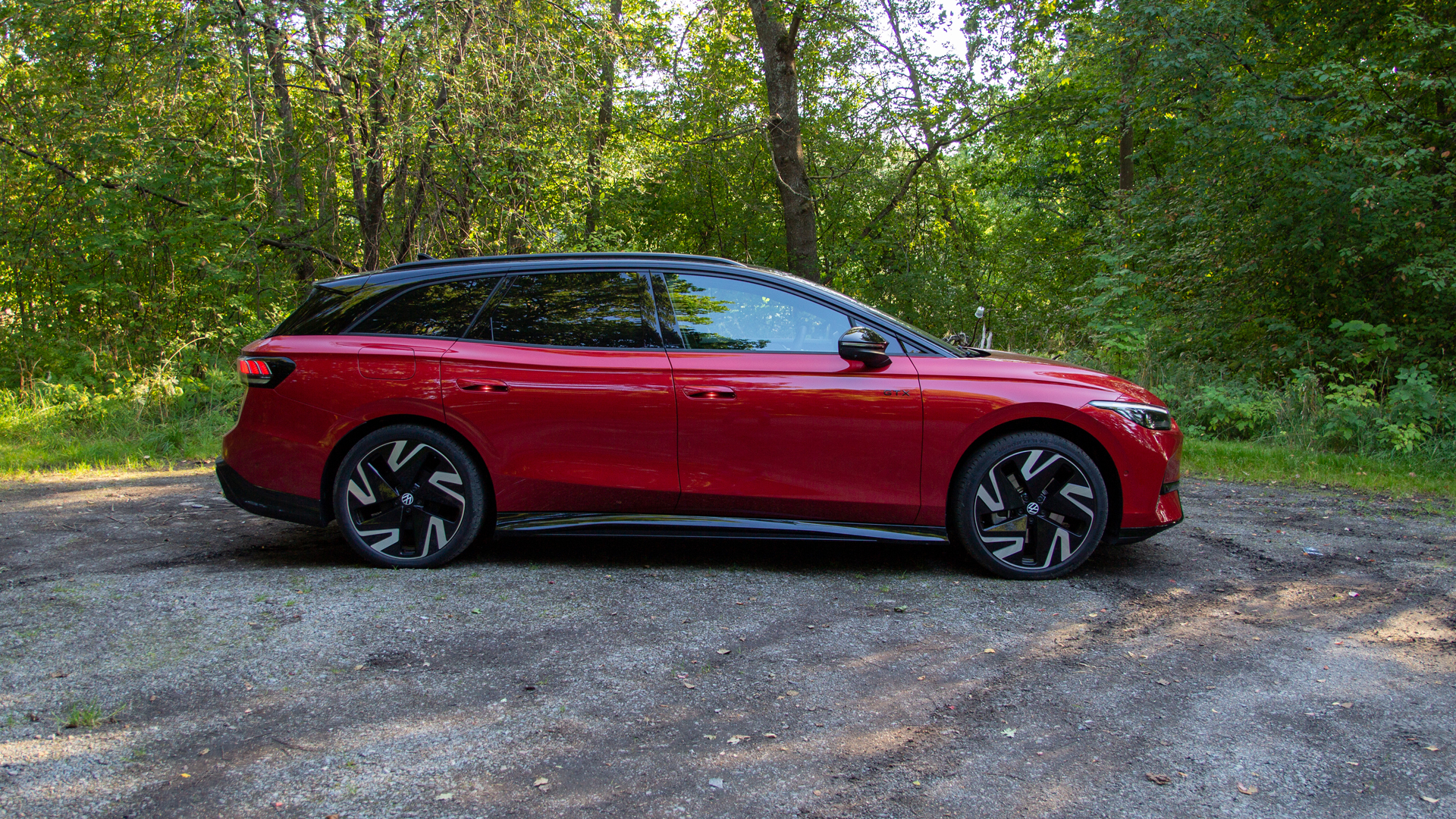
There are a number of different versions of the Tourer to consider, so before I talk about the GTX version that I've been driving, let's glance at the prices for all the models. While the ID.7 starts at £51,550, the ID.7 Tourer starts at £52,240 at the time of writing. That's for the Pro Match which comes with a smaller battery capacity.
Move up to the larger battery and you're looking at the Pro S. That starts from £56,140 in Match trim, while the GTX version comes in at £62,670. The GTX benefits from 4Motion (all-wheel drive), which goes some way to explaining the price.
As I said above, there aren't a huge number of rivals in this space. The forthcoming Audi A6 e-tron will crossover with the ID.7 GTX, while over at BMW there's the i5 Touring, which starts at £69,945. VW is more affordably priced, as you'd expect.
Design and interior
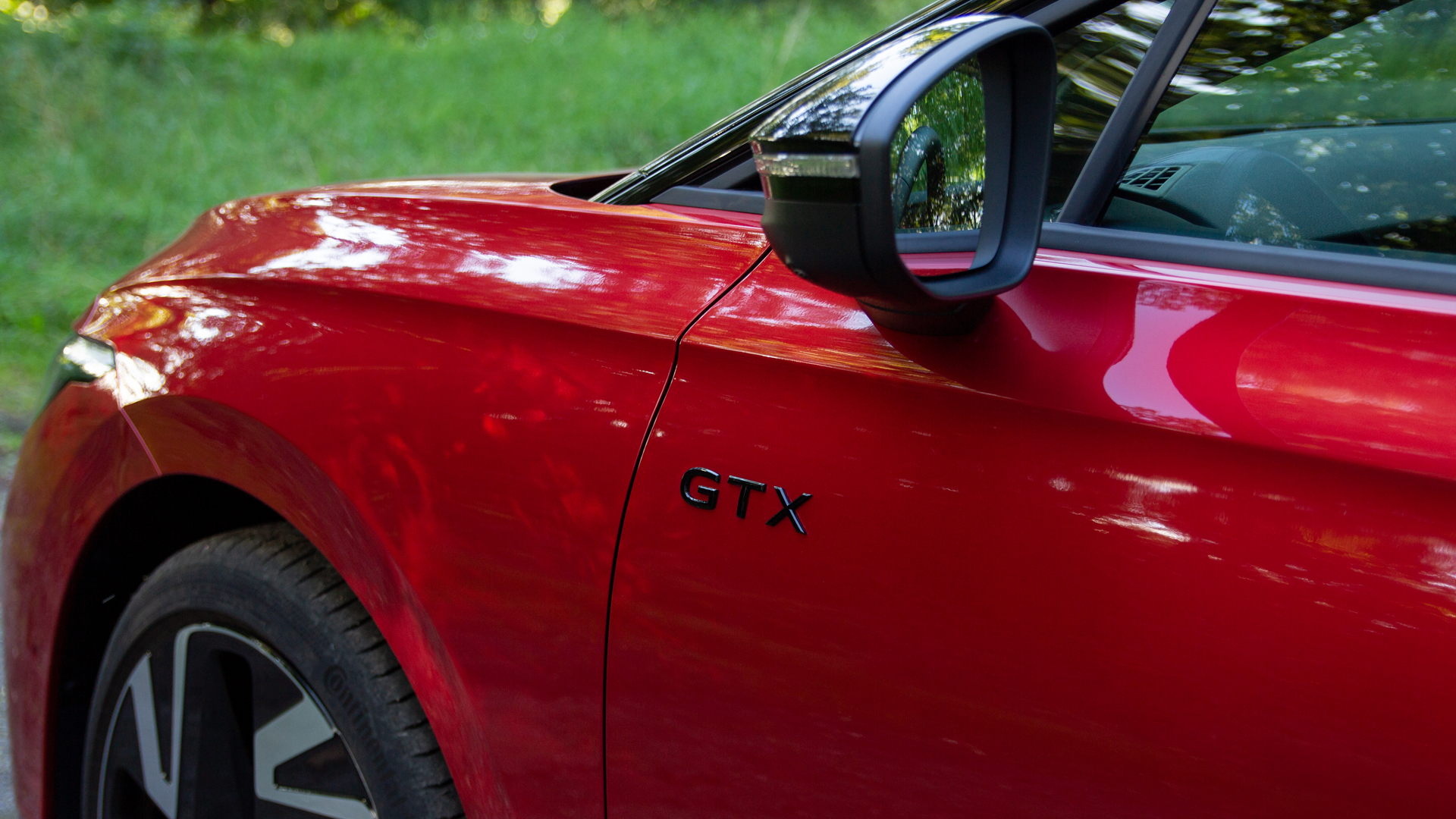
VW's ID family of cars all share a familiar design, with flowing lines from the front of the car and along its length. Glance at the ID.7 and you can see how it's related to other ID models. Importantly, it's different to VW's combustion Passat, which sits alongside this model as an alternative.
The GTX version gets some bespoke exterior trim elements around the nose of the car and in the 20-inch Skagen wheels, so it looks a little sportier and more aggressive than the lower-spec models.
Get all the latest news, reviews, deals and buying guides on gorgeous tech, home and active products from the T3 experts
That includes additional daytime running lights in the front bumper, with two triangles that form an arrow, while the VW badges front and back are illuminated too. Around the back there's a GTX diffuser, while there is GTX lettering on the rear and flanks of the car.
This is a long car – nearly 5 metres – and once you're behind the wheel you'll appreciate that it's pretty wide too. While it has a lower stance than an SUV, once you're inside, there's no shortage of headroom, while knee space for the rear passengers is generous too. It's a really comfortable car for passengers, whether they're adults or children.
The defining element of an estate car is the rear, the boxy back door opening on 605-litres of storage space, or a huge 1,714 litres with the rear seats folded. That's enough space to lots of suitcases, your dog, or that mattress you need to take to the recycling centre.
The interior of the ID.7 GTX Tourer again follows familial ID design, minimalised compared to some of VW's other models. The GTX features leatherette trim for a higher standard of finish than other models, while the sporty seats get a microfibre finish that's really comfortable and supportive. The red piping on the GTX models adds a little lift to make it all look more exciting too.
There's an optional panoramic roof fitted with smart glass, which you can change from transparent to opaque with the swipe of a finger, or by voice command via IDA, VW's in-car assistant. That roof floods the interior with light, but it's great to be able to turn it opaque if you want privacy or some shade.
Technology to be excited about
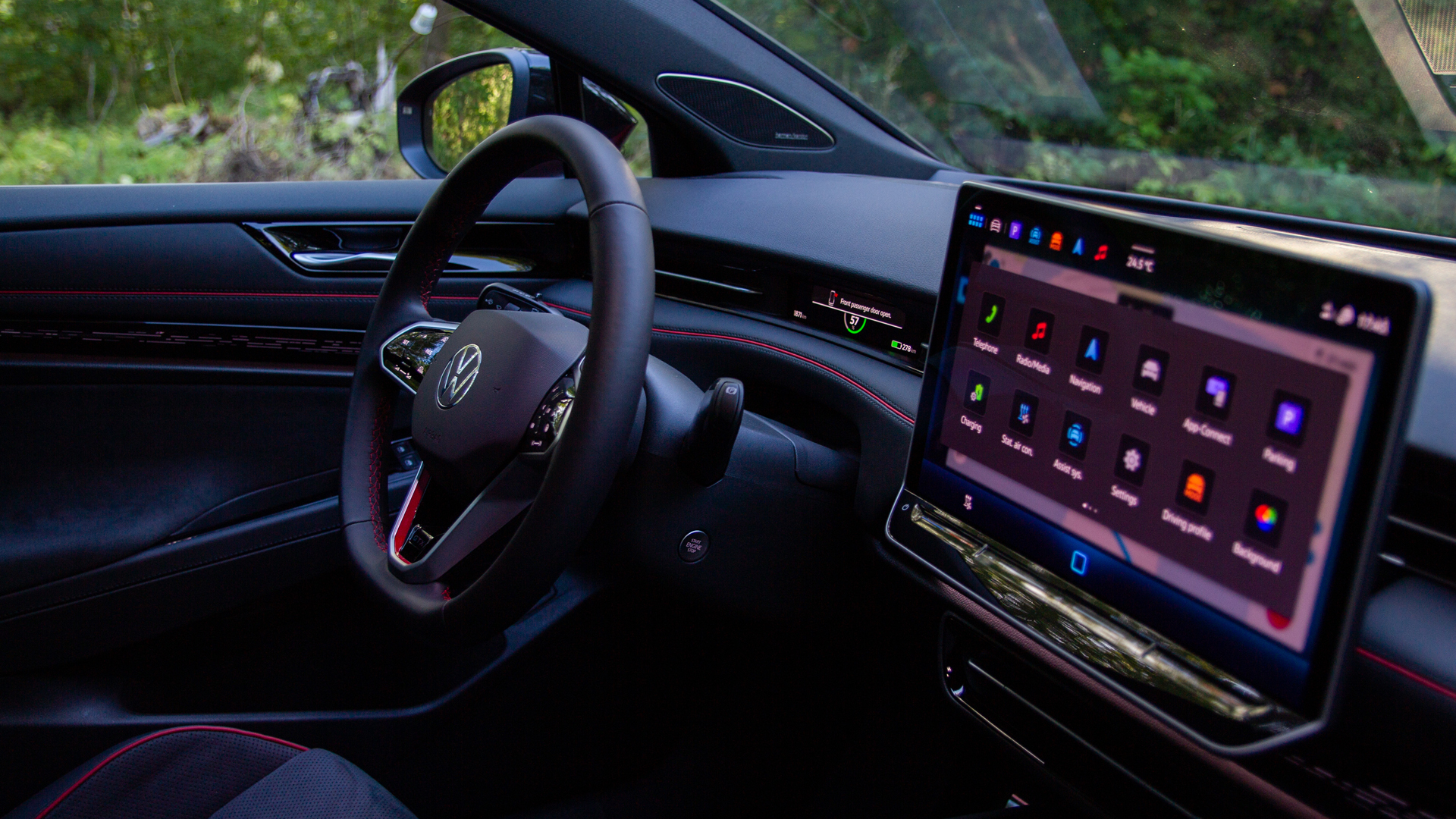
The VW ID.7 comes with an exciting bit of tech as standard – the augmented reality heads-up display (HUD). Some such systems work on the car's screens, overlaying directions on a video feed, but I think VW's solution here is the best way to do it. When you're using the satnav, you'll get directions and turning arrows that appear in your eyeline, so you don't have to take your eyes off the road.
The best bit is that VW has made this system compatible with smartphone-based route guidance too. If you're using Google Maps or Apple Maps via Android Auto or Apple CarPlay, your VW ID.7 still give you those directions via the HUD, including the augmented reality part of it. Lack of support in this way has long been a drawback of using CarPlay, but VW has solved that.
Sitting in the centre of the car is a 15.1-inch display. It's huge, while the driver display has been minimalised to a small screen that's integrated into the dash. While I'm not in favour of removing driver displays, the fact that the HUD is standard ultimately makes up for it.
VW's operating system has come in for a lot of flack since it launched on the ID.3 five years ago. VW has listened to feedback and it has been getting progressively better – now appearing as OS 5.0 on the ID.7 GTX. T3's Editor-in-Chief Mat Gallagher looked in more detail at the changes that the OS change ushered in recently, but the biggest thing for me is the ability to add your own shortcuts across the top of the screen. That makes it much easier to get around the interface than on older versions.
VW continues to add functionality too, with support for Spotify and AirConsole the latest additions, meaning you can listen to your music or play games when you're charging the car. Yes, the steering wheel controls on the ID.7 don't feel quite as nice as the new VW Golf, but it's something that you get used to.
There's automatic parking tech available with Park Assist Pro which some might value given the size of the ID.7. This also offers remote parking and a memory function, so it can record a parking manoeuvre and complete it automatically. This will, for example, allow you to return home and have the car automatically park in your parking space. You'll also be able control this with a smartphone, so you can park the car or recall the car using your phone.
There's the option for a 360-degree camera view, but one small detail that I did find odd is that the reversing camera is a little low in resolution. It's still fine for parking, it just doesn't look as sharp as some.
Range, performance and driving impressions
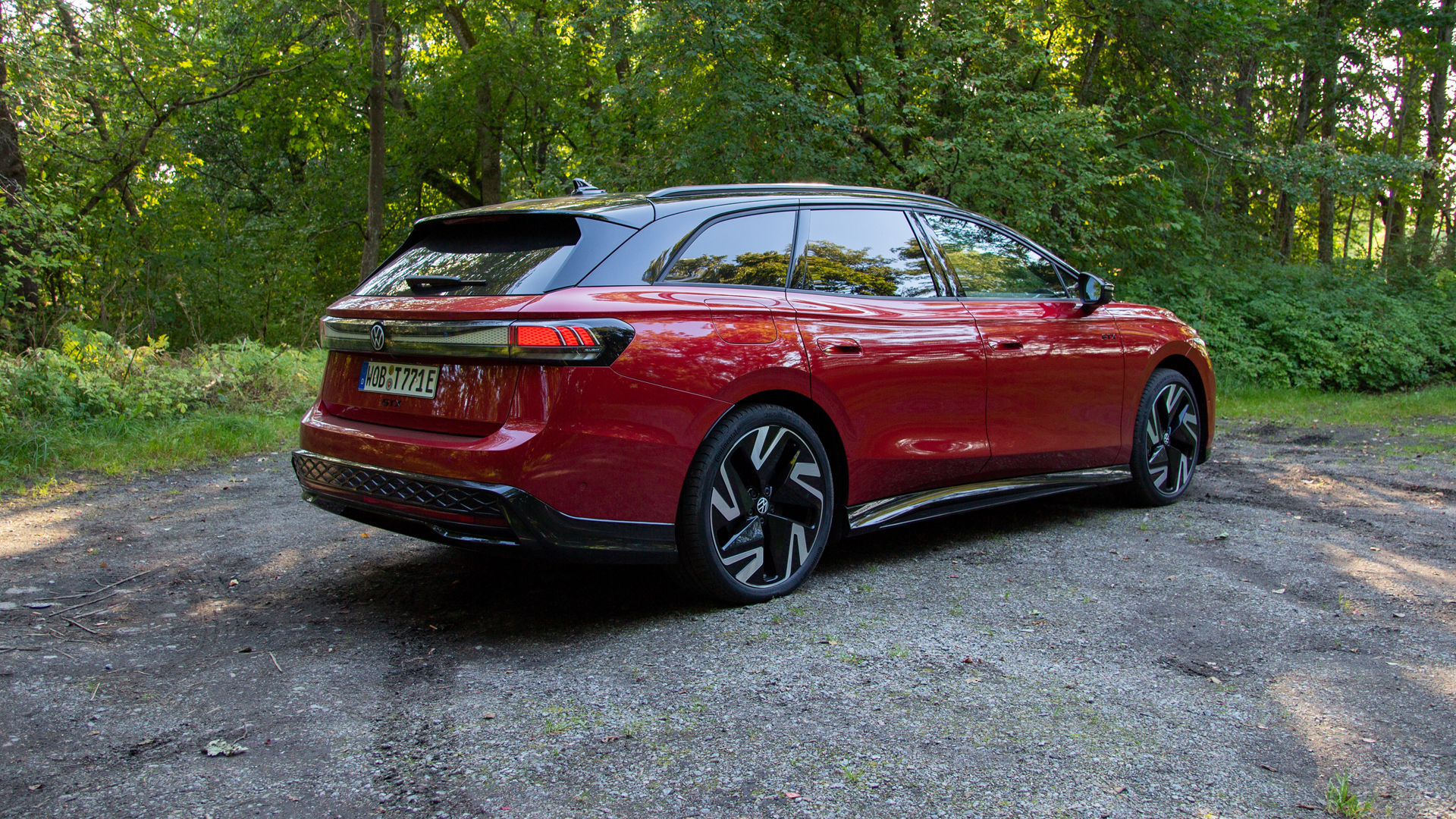
The VW ID.7 GTX marks itself out as different from the other ID.7 models in a couple of ways. The first is that it only has the larger 86kWh battery and the second is that it only comes with 4Motion, VW's all-wheel drive system. That means you have a dual motor arrangement for a combined output of 340PS – that's 54PS more than the rear-wheel drive system on the regular models.
This all-wheel-drive system isn't about heading offroad, it's designed to ensure that the drive is delivered with optimum efficiency to the front and rear axles. That boosts the performance but will also enable a better experience when you have a fully loaded car, including towing up to 1400kg.
Acceleration is increased, hitting 62mph in 5.5 seconds, with a top speed of 112mph. That makes the VW ID.7 GTX more fun to drive: it just feels like it's sharper and more responsive than the lower-tier ID.7 models. Note that GTX isn't quite GTI territory: the GTX is still a sensible estate, but there are real advantages in that all-wheel drive system, especially if you find yourself driving in wet or snowy conditions.
There's support for 200kW charging so those long-distance trips shouldn't pose a problem either. The range of the ID.7 GTX Tourer is given as 362 miles. During my test driving I found that I was getting an average of 4.1 miles per kWh, which would be 352 miles. Of course, the performance that you get will depend on the driving conditions, but the long-range is definitely an advantage here.
Should I buy the VW ID.7 GTX Tourer?
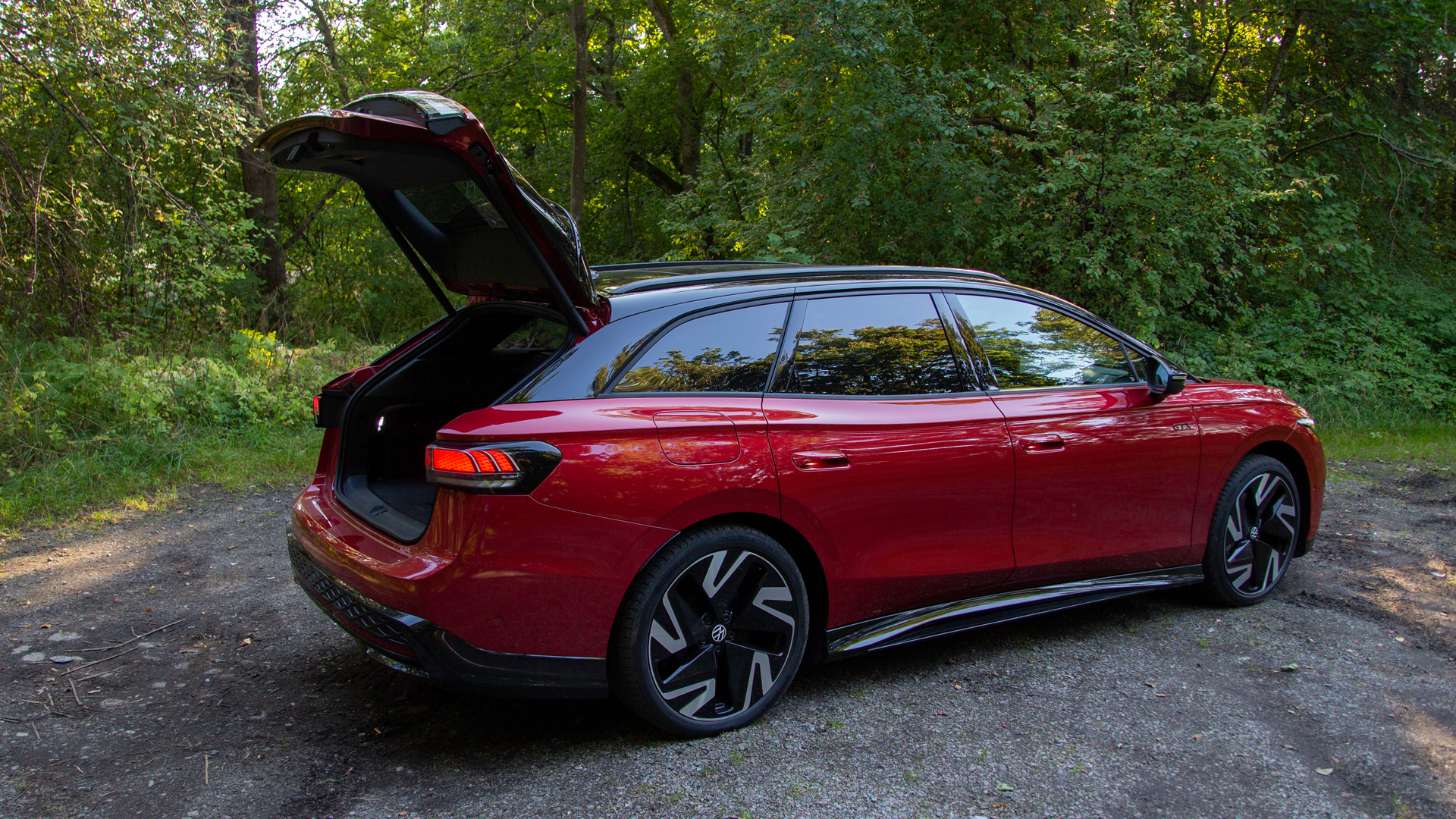
The VW ID.7 GTX Tourer is a great car to drive. The GTX side of things makes it a little more exciting on the road than the vanilla versions, while the boosted trim over the Pro S model makes it look better too.
If you're in the market for an electric estate car, then it would be criminal not to look at the ID.7 Tourer. While the practicality and much of the tech is available on the regular models, the appeal of the GTX is that it looks better, it drives better, and it offers all-wheel drive.
The space that the ID.7 GTX Tourer offers makes it hugely practical; sure, the price is high, but you're getting a lot of car, a lot of range, and a lot to love.

Chris has been writing about consumer tech for over 15 years. Formerly the Editor-in-Chief of Pocket-lint, he's covered just about every product launched, witnessed the birth of Android, the evolution of 5G, and the drive towards electric cars. You name it and Chris has written about it, driven it or reviewed it. Now working as a freelance technology expert, Chris' experience sees him covering all aspects of smartphones, smart homes and anything else connected. Chris has been published in titles as diverse as Computer Active and Autocar, and regularly appears on BBC News, BBC Radio, Sky, Monocle and Times Radio. He was once even on The Apprentice... but we don't talk about that.